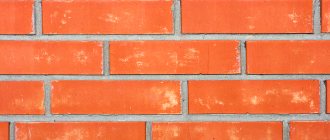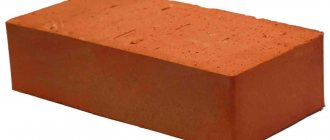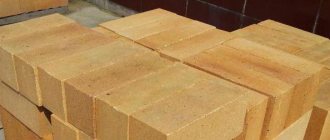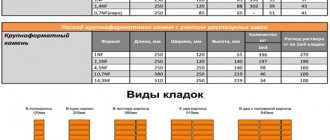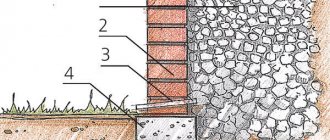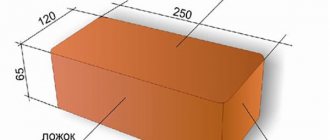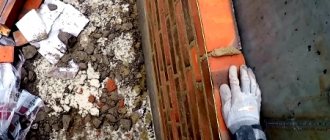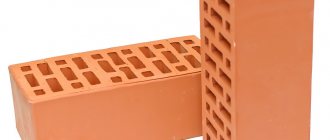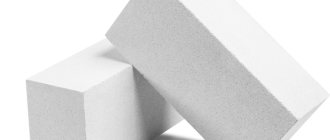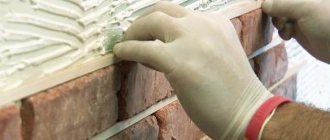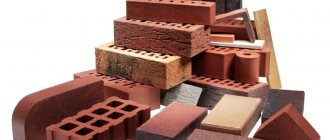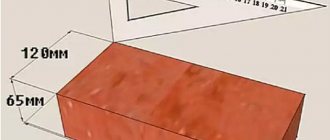One and a half brick size
Red one-and-a-half brick: its characteristics and manufacturing process
Red one-and-a-half brick is a fairly common product, which is not much different in cost from the single version. True, a similar principle is true when comparing price ratios. At the same time, the one-and-a-half brick, in its characteristics, fully complies with all the necessary technical standards specified in the regulatory documents. These parameters completely coincide with the criteria inherent in ordinary red brick. The only difference between such material and the mother specimen is its size. If the parameters of an ordinary single product are 250x120x65 mm, then for a one-and-a-half analogue they differ in the size of one indicator. One-and-a-half bricks are characterized by the following parameters, showing the length, width and height of the specimen, and look as follows - 250x120x88 mm.
Basic brick formats.
The characteristics of ordinary one-and-a-half bricks are determined by the process of its manufacture, which consists of uniformly firing clay blocks until they acquire the necessary parameters of rigidity and strength. During the process of thermal exposure applied to the workpieces, the top layer hardens most quickly, and the middle hardens much more slowly. This process causes the formation of a rather porous material structure containing many voids.
At the same time, the very name “one-and-a-half brick” is rather a common noun and can be applied to almost any similar ceramic product. Today, manufacturers of similar products produce many varieties of this material with such dimensions. These materials can be either clinker or silicate types of this material.
Ceramic brick size
Ceramic bricks are fired parallelepipeds formed from clay. Quality is largely determined by correctly maintained firing parameters, as well as the composition of the clay solution. High-quality ceramic bricks can be used for any construction operation: for laying a foundation (solid), constructing external walls and internal partitions.
Building bricks have certain dimensions determined by standards. The most commonly used single brick size is 250*120*65 mm
The main disadvantage of this building material is some variation in geometry. It is explained by the characteristics of the clay - it can have different “fat content”, which makes it difficult to accurately predict how much the dimensions will decrease during drying/firing.
What to look for when choosing
When choosing red brick, you should pay attention to its color. It displays the quality of the batch with a parameter such as brick size. It can be under-burnt or over-burnt. The second option is not bad in operation (it looks darker than usual), but it is better not to use unburned brick (lighter and looser) at all - it falls apart very quickly.
Unburnt bricks quickly collapse
The second point that you need to pay attention to is the absence of foreign inclusions. The most common are light dots and expanded clay. Both lead to rapid destruction of the brick. So we select only batches with uniform coloring without any additives.
More quality criteria
- For solid building bricks: Chips and bluntness of edges and corners are acceptable in an amount of no more than 2 pieces, no more than 1.5 cm long.
- There may be a curvature of the edges of no more than 3 mm.
- The spoon is allowed to have a crack across the width of the brick with a length of no more than 3 cm.
- No more than two chips at the corners with a depth of 1-1.5 cm, if they do not reach the voids.
Brick can be ordinary or finishing
That is, the requirements for ordinary building bricks are quite flexible. The presence of these defects does not affect the quality of the masonry, and the decorative component is unimportant, since the presence of finishing is assumed. Don’t forget to check the size of the brick - the spread in one batch should not be more than 3 mm.
The requirements for finishing (cladding) ceramic bricks are more stringent. Invalid:
- Chips of edges more than 1.5 cm deep.
- There should be no cracks.
- There should be no breaks on the ribs more than 3 mm wide and more than 1.5 cm long.
To comply with these requirements, the finishing bricks are placed on pallets, the corners are protected with boards knocked down at an angle, and the entire structure is wrapped in film. It is transported in this form.
Dimensions
The optimal size of clay bricks (red, ceramic) was determined historically. It has been produced for thousands of years, and as a result, the ideal combination of lengths has been developed, which is reflected in the standard. It was adopted only in the last century. There are three standard options:
- single - 250*120*65 mm (513 pcs per cubic meter);
- one-and-a-half - 250*120*88 mm (379 pieces per cube);
- double (ceramic stone) - 250*120*138 mm (55 pieces per cube).
Main dimensions of red ceramic bricks
One of the features is that a single brick can be solid or hollow. One-and-a-half and double - only hollow ones, otherwise they turn out to be too heavy for comfortable work.
In addition to the standard ones, there is a reduced brick. It is produced in Europe, but it also comes to us. Its parameters and international designation are summarized in a table.
| Marking | Brick size | Consumption |
| DF | 240*115*52 mm | 64 pcs/m2 |
| RF | 240*115*65 mm | 54 pcs/m2 |
| NF | 240*115*71 mm | 48 pcs/m2 |
| WDF | 210*100*65 mm | 59 pcs/m2 |
| 2DF | 240*115*113 mm | 32 pcs/m2 |
Which size is better
In the post-Soviet space, single brick is most often used. It is very familiar to our eyes; many masonry schemes have been developed for it. It is worth mastering bricklaying with your own hands using this material.
One-and-a-half bricks are used less frequently. It provides some economic benefit. Firstly, a cubic meter costs a little lower. Secondly, since the masonry fragments are larger, less solution is consumed. Thirdly, the work goes faster. Time is saved due to the larger size. But it’s more difficult to work with a one-and-a-half brick, even if it’s hollow – it’s hard to hold in your hand. And the appearance of the wall is unusual.
According to the standard, the edges of a brick are called bed, poke, spoon
Double brick is more often called ceramic building stone. When using it, the most noticeable effect is the speed of construction. In addition, the saving of the solution increases. But you won’t be able to grab such a brick with one hand. Therefore, it is better to work with an assistant. The appearance of the masonry leaves much to be desired, so exterior finishing is desirable.
If we talk about other countries, the most popular ones in Europe are NF and DF. Imported NF ceramic bricks have almost the same proportions as domestic ones. DF category is thinner, the masonry looks elegant.
Hyperpressed (torn) brick
Hyperpressed brick is an example of reliability and durability.
Hyperpressed brick is very reliable and durable.
In its basic qualities, this type of material is close to natural stone. First of all, we are talking about the strength and structure of the product, which are at a very high level. Such characteristics are due to the technological process that underlies the manufacture of this product. Torn brick, as it is also called, is made from slightly different components than its ordinary red counterpart. It is based on the following components:
- cement;
- lime;
- crushed stone
All these components make it possible to create a monolithic and dense structure of the material, and special pressing makes it extra dense. As a result of strong compression, the torn brick is practically deprived of cavities, which are inherent in all ceramic products. The baking procedure finishes the job and removes air from the material. As a result, due to its high density, the weight of the product increases significantly and can reach 4.5 kg per unit. Such a high density makes this material extremely durable and allows it to be used in absolutely any conditions. As for the outdoor use of such products, hyperpressed brick is one of the best for outdoor use. In addition, its appearance and texture make it possible to create magnificent objects with excellent external characteristics.
In addition to its external features, this option has increased frost resistance, which reaches 150 cycles, as well as a low degree of water consumption, barely reaching 5%. Such parameters make the material very strong and reliable, but significantly affect the installation procedure, which can take a significant amount of time.
Dimensions of sand-lime brick
Sand-lime brick is made from quartz sand (9 parts) and lime (1 part), and a certain amount of additives. This building material has better thermal conductivity characteristics (conducts heat worse) and is lighter in weight. The technology is such that it is easier to maintain geometric dimensions, so there are usually no problems.
But it is not as hard as red brick, and it is also afraid of moisture - with prolonged contact with moisture it begins to crumble. Because of this, the main area of use is for the construction of walls and partitions. It cannot be used either for the foundation, or for the basement, or for laying a chimney.
Sand-lime brick can be colored. In this case, it is used as a finishing material.
The second area of application is as a finishing material. The base composition has a white, slightly grayish color. You can add any dye to it and get colored bricks.
The dimensions of building silicate bricks are the same as those of ceramic bricks: single has a height of 65 mm, one and a half – 88 mm, double – 138 mm.
The size of sand-lime brick is the same as standard ceramic
Single and one-and-a-half silicate bricks can be solid or hollow. A single solid one weighs 3.6 kg, a hollow one weighs 1.8-2.2 kg, depending on the size of the voids. A full-bodied one and a half has a mass of 4.9 kg, and a hollow one - 4.0-4.3 kg.
Double sand-lime bricks are usually made hollow. Its weight is 6.7 kg. Full-bodied ones are rare - due to their large mass (7.7 kg) they are difficult to work with.
Peach brick: production and use
Finishing the house with Peach brick gives a nice color.
Ceramic brick "Peach" is a certain type of ordinary brick. It acquired its external colorful and laconic properties thanks to the red clay that underlies it. Thanks to their external characteristics, such products can significantly diversify the appearance of any buildings and make them more sophisticated. The manufacturing technology of this material is also slightly different from the baking procedure for ordinary bricks. First of all, these differences lie in the temperature that affects the workpiece. When drying the material, a temperature of 150°C is used, while during direct baking its values are close to the parameters necessary to create a clinker analogue and are about 750-800°C.
Thanks to the use of red clay, the material acquires a delicate shade, and the baking technology makes it reliable and holistic. Such parameters make it possible to use “Peach” for various works, and not be limited to just decorating surfaces. It can be used for the construction of absolutely any objects, and its market value is not much different from the price of ordinary red brick. It is the most common and served as the starting point for the creation of all other varieties of similar products.
- Using brick in the interior
- Use of half-brick masonry in cottage construction
Single slotted brick
Single slotted brick is used for the construction of external and internal walls for finishing with facing material or plaster. During laying, voids are not completely filled with mortar, which virtually eliminates the appearance of “cold bridges” and increases the thermal insulation performance of structures.
The material is marked M100 - M200, where the number is an indicator of compressive and bending strength. Brick has a standard set of properties inherent in slotted building materials: low thermal conductivity (0.36-0.46 W/m °C), high frost resistance and moisture resistance. The dimensions of the single slot brick are 250x120x65 mm.
Material consumption for laying:
- half a brick (per 1 m2) - 51.3 pieces;
- per 1 m3 of masonry - 394.5 pieces;
- solution per 1 m3 – 0.2 m3.
The calculation was performed for a layer of mortar 10 mm thick.
